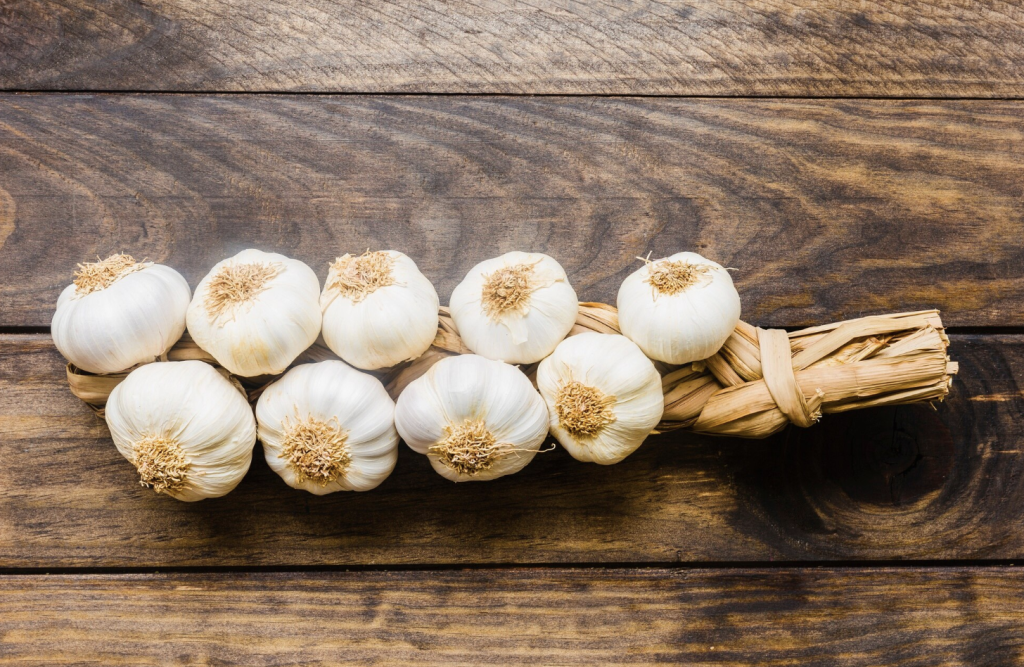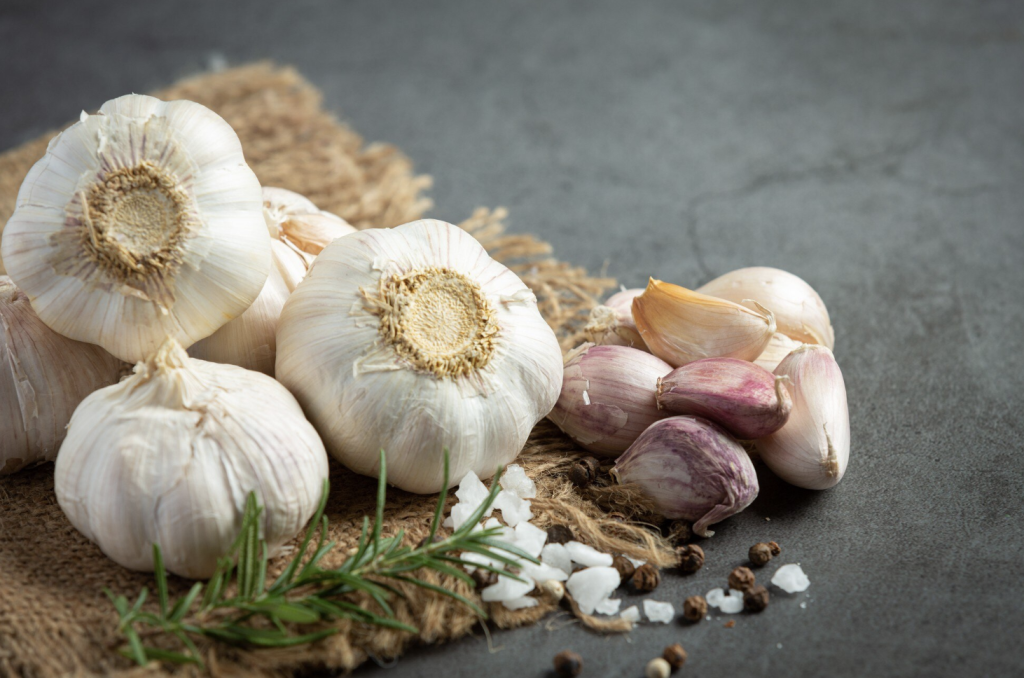
Introduction
Garlic, a humble bulb found in kitchens worldwide, has been celebrated for its culinary and medicinal properties for centuries. Revered in various cultures for its potent health benefits, garlic is often considered a natural remedy powerhouse. This article delves into the numerous health benefits of garlic, exploring its historical significance, active compounds, and ways to incorporate it into your wellness routine.
Historical Significance
Garlic (Allium sativum) has a rich history of medicinal use dating back thousands of years. Ancient civilizations such as the Egyptians, Greeks, Romans, and Chinese documented its therapeutic properties. Garlic was often used to enhance physical strength, prevent infections, and treat a variety of ailments ranging from respiratory issues to digestive disorders.

Active Compounds in Garlic
The health benefits of garlic can be attributed to its bioactive compounds, the most notable of which are allicin, sulfur compounds, and antioxidants. These compounds work synergistically to provide garlic’s healing properties.
- Allicin: This sulfur-containing compound is formed when garlic is chopped, crushed, or chewed. Allicin is responsible for garlic’s pungent smell and many of its health benefits, including antimicrobial and anti-inflammatory effects.
- Sulfur Compounds: Garlic contains other sulfur compounds like diallyl disulfide and s-allyl cysteine, which contribute to its antioxidant and heart-protective properties.
- Antioxidants: Garlic is rich in antioxidants that help combat oxidative stress and reduce the risk of chronic diseases.
Health Benefits of Garlic
Garlic offers a wide array of health benefits, making it a valuable addition to any wellness regimen. Here are some of the most significant ways garlic can enhance your health:
1. Boosts Immune Function
Garlic has been shown to enhance the immune system, helping to ward off illnesses like the common cold and flu. Regular consumption of garlic can reduce the frequency and severity of these infections. Studies suggest that garlic supplements can reduce the number of colds by 63% and the duration of cold symptoms by 70%.
2. Reduces Blood Pressure
High blood pressure, or hypertension, is a leading risk factor for cardiovascular diseases. Garlic has been found to have significant blood pressure-lowering effects, particularly in individuals with hypertension. Studies indicate that garlic supplements can reduce systolic and diastolic blood pressure by an average of 8-10 mmHg.
3. Improves Cholesterol Levels
Garlic can improve cholesterol levels, which in turn can reduce the risk of heart disease. It has been shown to lower total and LDL (bad) cholesterol while slightly increasing HDL (good) cholesterol. The sulfur compounds in garlic are thought to be responsible for these cholesterol-modulating effects.
4. Supports Cardiovascular Health
Garlic’s ability to lower blood pressure, improve cholesterol levels, and reduce oxidative stress contributes to overall cardiovascular health. Additionally, garlic has antithrombotic properties, meaning it can help prevent the formation of blood clots, further reducing the risk of heart attacks and strokes.
5. Exhibits Antimicrobial Properties
Garlic has potent antimicrobial properties, making it effective against a variety of pathogens, including bacteria, viruses, and fungi. Allicin, in particular, has been shown to inhibit the growth of bacteria such as E. coli and Staphylococcus aureus, as well as combat fungal infections like Candida.
6. Enhances Athletic Performance
Historically, garlic was used to enhance physical performance and reduce fatigue. Modern research suggests that garlic can improve exercise performance by increasing endurance and reducing exercise-induced fatigue. This benefit is attributed to garlic’s ability to enhance nitric oxide production, which improves blood flow and oxygen delivery to muscles.
7. Provides Antioxidant Protection
Garlic is rich in antioxidants that protect cells from damage caused by free radicals. This antioxidant activity helps reduce the risk of chronic diseases, including cancer, Alzheimer’s disease, and other neurodegenerative conditions. Garlic’s antioxidants also support healthy aging by mitigating oxidative stress and inflammation.
8. Detoxifies Heavy Metals
Garlic has been shown to protect against heavy metal toxicity, particularly lead. The sulfur compounds in garlic can bind to heavy metals and facilitate their excretion from the body. Studies have demonstrated that garlic supplementation significantly reduces blood lead levels and alleviates symptoms of lead toxicity.
Incorporating Garlic into Your Diet
To reap the health benefits of garlic, it’s essential to incorporate it into your diet effectively. Here are some tips for adding more garlic to your meals:
- Raw Garlic: Eating raw garlic maximizes its allicin content. Chop or crush fresh garlic and let it sit for a few minutes before consuming to allow allicin to form.
- Cooked Garlic: While cooking can reduce some of garlic’s beneficial compounds, it still retains many health properties. Add garlic to soups, stews, stir-fries, and roasted vegetables.
- Garlic Supplements: For those who find it challenging to consume enough garlic through food, garlic supplements are a convenient alternative. Look for supplements standardized to contain allicin or aged garlic extract.
Precautions and Side Effects
While garlic is generally safe for most people, it can cause side effects in some individuals, especially when consumed in large amounts. Common side effects include:
- Digestive Issues: Garlic can cause heartburn, gas, and bloating in some people.
- Bleeding Risk: Garlic has blood-thinning properties, which can increase the risk of bleeding, especially in individuals taking anticoagulant medications or preparing for surgery.
- Allergic Reactions: Some people may be allergic to garlic, experiencing symptoms like skin rashes or respiratory issues.
It’s advisable to consult with a healthcare provider before significantly increasing garlic intake, particularly for those with underlying health conditions or those taking medications.
see video
Conclusion
Garlic is a potent natural remedy with a myriad of health benefits. From boosting immune function and improving cardiovascular health to exhibiting antimicrobial properties and providing antioxidant protection, garlic’s therapeutic potential is vast. By incorporating garlic into your diet, you can harness its healing power and unlock numerous wellness secrets. Embrace the benefits of this ancient remedy and let garlic enhance your health and vitality naturally.
For more detailed insights and research-backed information on the health benefits of garlic, consider exploring reputable health websites and consulting with healthcare professionals.
